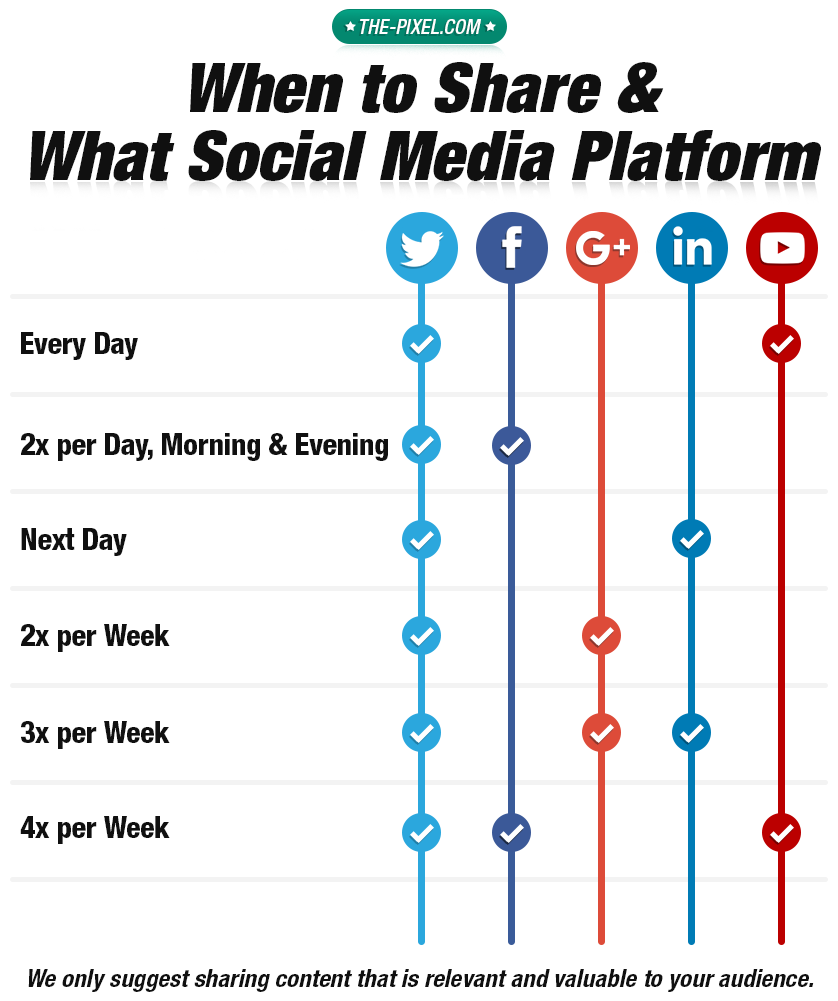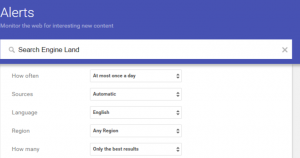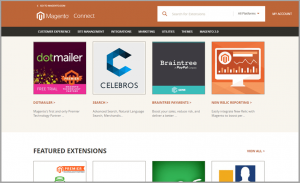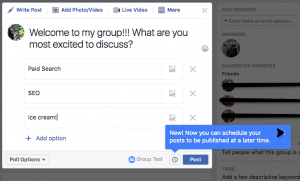
Source: Pixabay
Social media is governing our lives. Of the 7.7 billion people in the world, nearly 3.5 billion use social media. In other words, roughly one in two people across the globe access popular social media platforms like Facebook, Instagram, Twitter, and YouTube.
Further, an infographic by FameMass shares that the world’s population spends an average of 2 hours and 23 minutes per day on social media platforms. A majority of people use social media to stay up-to-date with the current events, connect with people, access engaging content, and (most importantly!) research or find products.
All this data is enough to realize the central role social media plays in a firm’s marketing strategy. Therefore, an awesome social media strategy can help you boost your brand awareness, connect with your audience, and generate more leads. Read on to know how you can up your social media game.
1. Make a Solid Content Marketing Plan
Creating content for your social media channel can be a tricky undertaking. First things first, use the below-mentioned questions to determine what type of content you should be offering to your audience.
- Who is your audience? Define your audience persona based on their age, location, gender, likes, needs, purchase behaviors, and challenges or pain points.
- What topics interest them?
- What platforms are they active on?
- What content form do they prefer?
- What usable content you already have and what needs to be created?
The responses to these questions will help you create a foolproof content creation or curation plan. For instance, a coffee brewery’s target audience could be interested in content related to fancy coffee drink recipes or brewing tips and techniques.
Starting a blog and sharing relevant content pertaining to it is a sure-shot way to boost your social media efforts. Share varying content forms on your social media channel. For instance, you can link your social posts to long-form or short-form blog posts, visual content, videos, infographics, and SlideShare presentations.
Find the most popular posts and share them on your social page to boost your brand exposure. Social media scheduling tools like Hootsuite, Buffer, and Sprout Social can help you schedule and automatically publish posts.
Finally, merely posting content on your channel isn’t enough. Social media is about connecting with your audience and fostering relationships with them. Make sure you actively engage in social listening and engage your audience by responding to their comments and concerns, showing your appreciation, and sharing relevant information and user-generated content. Further, introduce surveys, contests, or a participation-based promotion to engage your audience and get interesting insights about their online behavior.
2. Know What to Share on Which Platform
Before posting your content, it is wise to carefully consider the audience profile and the purpose and communication style of each social platform. For instance, since everyone has a Facebook account, it is great for sharing content related to news or entertainment or fun videos. LinkedIn is a perfect channel for posting content that appeals to the B2B audience. Similarly, good-quality images and videos work well on Instagram. It is a highly visual social channel; hence, it’s important to focus on the quality of the product photography when sharing content on this channel.
Check out this infographic from The Collective to learn about the varying nature of the top social networks.
Each of these social channels talks to a unique audience. Choosing where to post what content will help you connect with your audience in the most effective manner.
Finally, it is important to maintain an ideal frequency of posts on each platform. ThePixel shares this interesting chart showing when you should share content on these social channels.

Source: The-pixel
A clear understanding of these platforms is critical to find success with your social media strategy. Hence, make sure that the content you share on each of these channels reflects its communication style and resonates with the audience
it caters to.
3. Don’t Underestimate the Power of Video
Video content is by far the most potent and memorable content form marketers can use to engage their audience. In fact, the HubSpot Digital Consumer Trends Report reveals that video is the most preferred form of content today.
In fact, if you want your audience’s undivided attention, video content should be your choice any day.
Video content can help your viewers connect to your brand story, thereby boosting engagement and conversions through social channels.
Use product videos, interviews, animations, listicles, live-streaming videos, and how-to videos to offer value to your audience and boost engagement and conversions. Live videos work best when showing behind-the-scenes look of your workplace or broadcasting interesting interviews with influencers.
You can also convert your high-ranking blog into a standalone video to strengthen your social profile and drive traffic to your blog. Use web analytics tools like BuzzSumo to identify top-performing keywords and posts. These keywords can then be used to come up with innovative topic ideas.
For instance, tools like AnswerThePublic can generate multiple visualization results for a single word like ‘yoga’, allowing bloggers to come up with innovative content ideas in this niche.
Finally, content creation tools like Wave.video or Promo can help you create and share a compelling brand story in the form of social video content.
4. Invest in Influencer Marketing
According to an infographic shared by the Influencer Marketing Hub, businesses that consistently invest in influencer marketing earn up to $ 18 returns for every $ 1 spent. This is because influencers help brands gain exposure to an engaged audience that specifically aligns with their business niche. Further, niche influencers charge less and are extremely effective in engaging the exact consumer audience your brand needs.
However, the challenge is to find the right influencers for your brand. Use tools like BuzzSumo, NinjaOutreach, Upfluence, and Awario to find the relevant influencers for your business. These tools analyze influencers based on their niche, reach, engagement, location, and demographics, helping you spot the most suitable advocates for your brand.
The influencer you choose should be relevant to your niche, able to create a potential level of engagement with the audience, and have a decent follower base. The right influencer can help you connect with your target audience, build trust, and drive engagement.
For instance, James Charles is one of the best-known influencers in the beauty domain. He is an influencer makeup artist who regularly partners with brands like Morphe Cosmetics and Covergirl and has nearly 16 million followers.
Once you have chosen an influencer for your brand, allow some creative freedom. The said influencer resonates with their audience for a reason. Trust them for this quality and share their content on your channel to highlight your collaboration and build your credibility.
Consider these rules shared by the Federal Trade Commission before diving into influencer marketing.
5. Measure Success
The only way to determine the strength of your social campaigns is by measuring their performance. Use social media monitoring tools to see what your competitors are publishing, respond to customer concerns, and track brand mentions and influencer campaigns.
However, in order to gain more actionable insights and ensure that your social engagement is robust and effective, it’s critical to dig deeper. For instance, if you are running an influencer campaign, merely monitoring the vanity metrics, namely likes, shares, or comments is not enough. Use UTM parameters to track the value of social marketing programs, procure data on where your traffic or conversions are coming from, and A/B test individual posts.
Similarly, engaging in social listening can help you track audience comments and mentions, helping you understand the sentiment behind these conversations. The insights derived from a thorough social media sentiment analysis will feed your overall social media strategy, allowing you to create an awesome product experience for your audience.
Wrapping Up
Social media is only expected to grow in popularity in the coming years. Therefore, businesses should use innovative strategies to boost their visibility on the most popular social channels, drive new business, and delight their followers.
A robust social media strategy not only attracts and engages the right set of audience but also helps a business stand out from the competition. We are confident that the tips shared in this post will set you on the right path and help you stay on top of your social media game.
Digital & Social Articles on Business 2 Community
(58)






